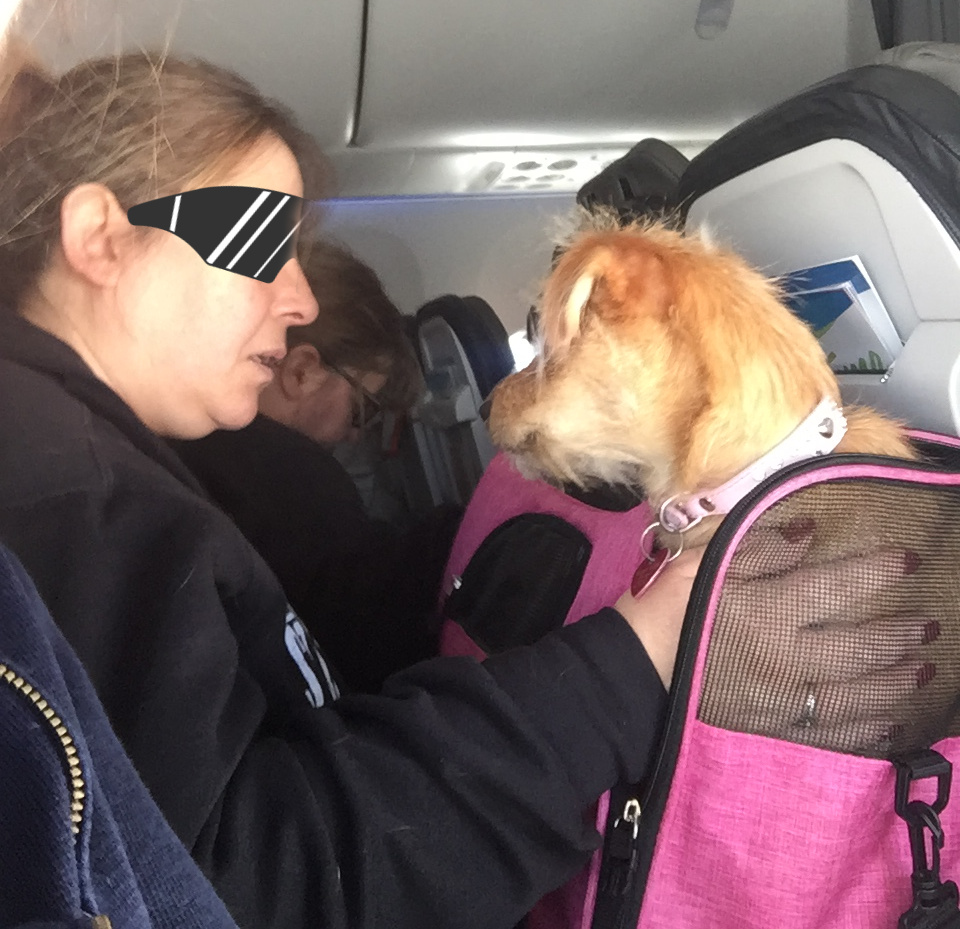Delta has adopted a new policy after an 84% increase in reported incidents involving service and support animals during 2016-2017.
The incidents involved animals biting, urinating, defecating, and in some cases attacking passengers, leaving serious injuries.
Delta’s service and support animal policy bans service and support animals under four months of age regardless of flight length as well as a ban on emotional support animals on flights longer than eight hours.
“These updates support Delta’s commitment to safety and also protect the rights of customers with documented needs — such as veterans with disabilities — to travel with trained service and support animals,” said John Laughter, Delta senior vice president of corporate safety, security and compliance.
Delta cited a widely reported attack by a 50-pound dog that left a passenger in the adjacent seat needing 28 stitches and so much blood on the nearby seats that the seats had to be replaced, not to mention the costly lawsuits.
Delta carried approximately 700 service or support animals daily in 2017.
“Customers have attempted to fly with comfort turkeys, gliding possums known as sugar gliders, snakes, spiders and more. Ignoring the true intent of existing rules governing the transport of service and support animals can be a disservice to customers who have real and documented needs,” the airline wrote on its blog in 2018, when it first started cracking down on the range of emotional support animals it allowed. “In 2017, Delta employees reported increased acts of aggression (barking, growling, lunging and biting) from service and support animals, behavior not typically seen in these animals when properly trained and working.”
Delta’s policy is more lenient than the one instituted by Alaska Airlines, effective Jan. 1.

I had a comfort chicken once. I bought it at the Safeway Deli.
Finally. Some common sense to help people who truly have and need a service animal. And help get rid of the abuse. There are always some.
My understanding is that The State of Alaska and The American Disability Act does not recognize emotional support dogs. For example, I know of one person who claims their cat was an Emotional support animal but had no health issues where the emotional support animal was medically needed.
Is far too easy to either get the forms online off the internet or get a doctor nurse to the other check and sign off on it
The problem is that an entire generation has been raised in an embryonic solution of perceived safety. It begins with “safe playground equipment” where children are not allowed to learn the painful effects of forces like gravity. It continues with a policy of ” conflict resolution” where a Bully escapes getting his clock cleaned by one of his victims. It continues with participation trophies for everyone , unmerited awards given to promote self-esteem. The upshot of this plan to retard development of a child is that many in this group feel anxious and afraid. Probably, because they have not been exposed to life’s realities and have been robbed of the experience that builds resilience. Perhaps this is why so many need to cling to their emotional support pet when boarding a Jetliner.
“safe playground equipment” came about many years ago when it was decided to provide something better for the kids than tree climbing and throwing rocks at each other. Manufacturers jumped on that band-wagon.
Pea gravel and sand on the playground was deemed better than hard-pack clay, and was part of this safer playground. Manufacturers jumped on that band-wagon.
Then someone decided that flammable rubber scrap was even better for covering the playground. Manufacturers jumped on that band-wagon.
Pea gravel and sand allows for a manageable loss of traction. Rubber scraps is treacherous under little feet. Fine dust from the rubber is also more harmful than dust from pea gravel and sand. Also, when was the last time vandals torched pea gravel or sand playgrounds?
“Safety” is often just another sales pitch, and more often than not doesn’t contribute to real safety.
“Safe automobiles” came about many years ago when it was decided to provide something better for people than crashing and burning in auto accidents. Seatbelts were deemed better than hard, angular dashboards and manufacturers jumped on that bandwagon. Then someone decided that airbags were better so that far fewer people would die and manufacturers jumped on that bandwagon. Anti-lock brakes then came around since they stop cars much better – even in icy Alaskan winter conditions – and manufacturers pushed them. Safety is often just another sales pitch, but one that PREVENTS INJURIES AND SAVES LIVES, and people rightfully buy and love safer cars that protect themselves and those they love.
As a dog, I fully support this policy.